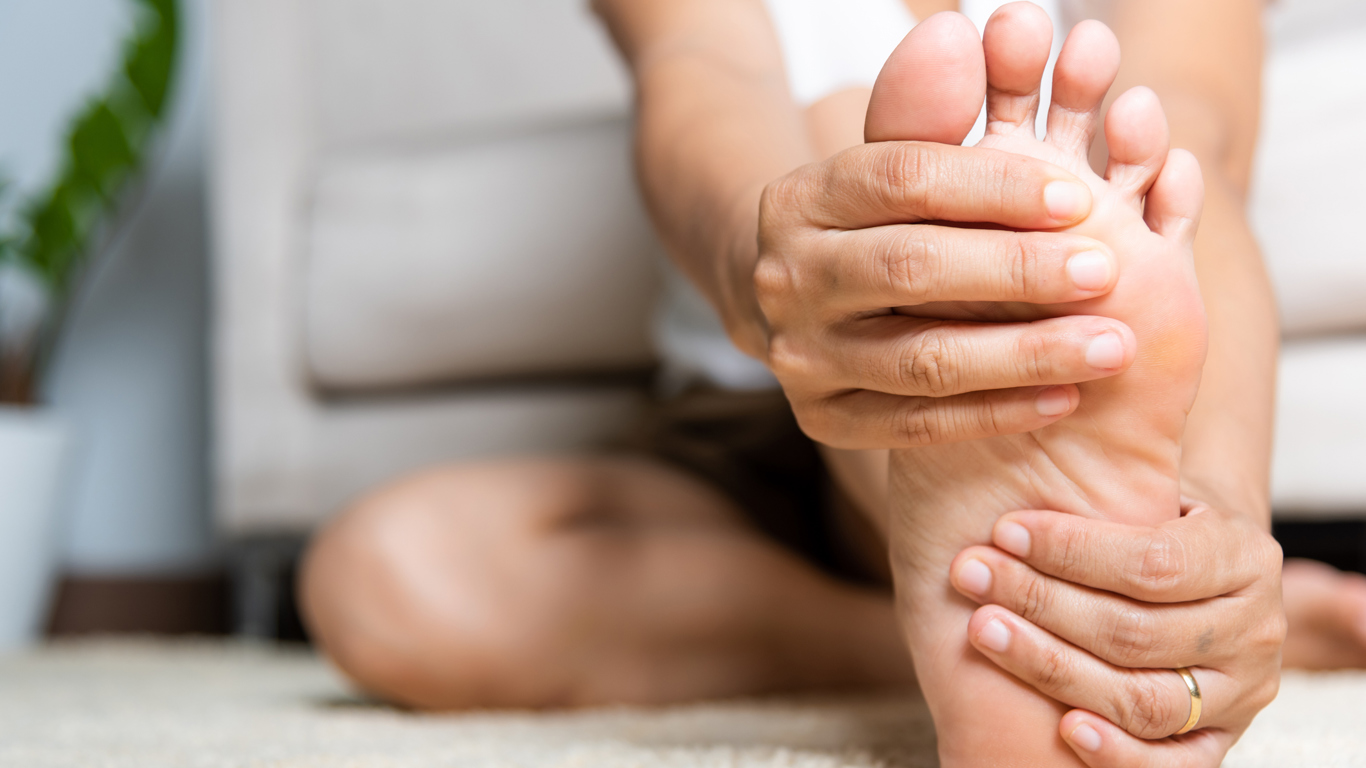What is Gout: Signs of Gout and Treatments
Gout is a common, yet complex form of arthritis that can affect anyone. Typically, gout takes the form of sudden, severe attacks of pain accompanied by swelling, soreness and redness in one or more joints. The affected joint usually appears hot, swollen, and tender and gout symptoms may come and go. However, there are ways to manage symptoms and prevent flare ups.

What is gout?
A form of ‘arthritis’ – which is the term for a broad range of joint diseases and joint pain. Gout is a common form of inflammatory arthritis that occurs due to a build-up of a crystal called uric acid. It often affects one joint at a time – usually the big toe – but it can also appear in the knee, ankle, foot, hand, wrist, or elbow. There is no ‘cure’ for gout, but you can effectively manage the condition with the help of medication and other self-help strategies.
Who can suffer from gout?
Anyone. However, men are three times more likely than women to develop gout. It typically affects men over the age of 40 and women after menopause. Attacks can vary from person to person. Some may only experience the sharp pains every few years, while others may suffer every few months.
Gout occurs in people who have high levels of uric acid, also known as urate, in their blood. Urate is created every day when our bodies break down purines (chemicals that are naturally created in our body but also are found in certain foods, such as red meat and some seafoods).
You’re more likely to have gout if you suffer from:
- Obesity
- Congestive heart failure
- Diabetes
- High blood pressure
- Kidney disease
- Or you have a family history of gout
What causes gout?
Gout is caused by having high levels of uric acid in the blood. When the uric acid builds up, either because the kidneys haven’t excreted it properly or because you’ve been consuming too-high a purine diet, it can form needle-like crystals that lodge in the joints – which causes the sharp, sudden pain.
What are symptoms of gout?
A gout ‘episode’ will be very painful and can happen quite suddenly, often overnight. During an episode, the affected joint(s) may experience:
- Intense pain
- Swelling and stiffness
- Redness
- Tenderness
- Warmth
- Lingering discomfort
- Limited range of motion
Flare ups are then followed by long periods of remission. If untreated, later gout attacks may then involve more joints, last longer and become increasingly severe over time. Some people eventually develop large masses of uric acid crystals that form in soft tissues or bones around joints and can appear as hard lumps.
How to diagnose gout?
To diagnose gout, you need to go to your doctor. It will require your medical history, a physical exam and tests which might include:
Blood tests – to check uric acid levels.
Joint fluid analysis – to examine fluid from the painful joint(s) for uric acid crystals.
Imaging tests – such as X-rays, ultrasound, magnetic resonance imaging and dual-energy computerised tomography.
How to manage a gout attack
You can manage your symptoms by:
- Avoiding alcohol & sugary drinks
- Elevating the joint(s)
- Putting ice on the joint(s)
- Limiting stress on the joint(s)
- Reducing your consumption of red meat, organ meats & shellfish
How is gout treated?
Gout can be managed with medical treatment and self-help strategies. Your doctor may suggest:
Nonsteroidal anti-inflammatory drugs (NSAIDs)
Preventive therapy – to lower uric acid levels in the blood using drugs like allopurinol, febuxostat, and pegloticase
Making changes to your diet and lifestyle (e.g. losing weight, limiting alcohol, eating less purine-rich food)
Getting more physically active
Protecting your joints by choosing low-impact activities such as walking, cycling or swimming
So, that’s our guide to gout symptoms and treatments. Don’t feel embarrassed to talk about gout to your friends and family. Try to stay active, get plenty of sleep and keep a healthy diet to keep yourself in good spirits.
At HSL, your comfort and wellbeing are our top priority, so we offer a range of practical and comfortable chairs, sofas and beds that have all been approved by our Occupational Therapist, Julie Jennings Dip COT HCPC, to support a healthy lifestyle.
Sign up for our newsletter
Sign up for our newsletter to hear about our exciting new collections, interior trends, wellbeing advice as well as exclusive offers.



